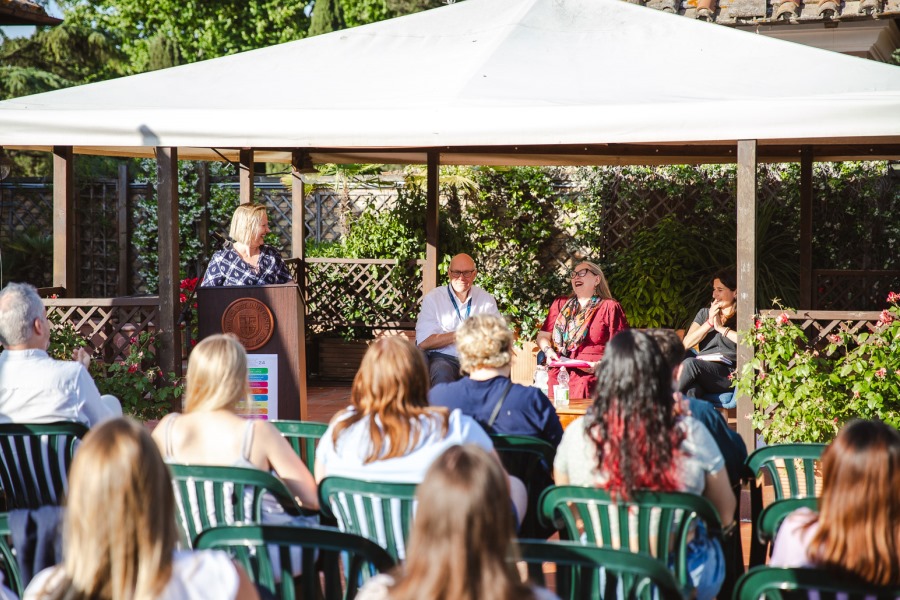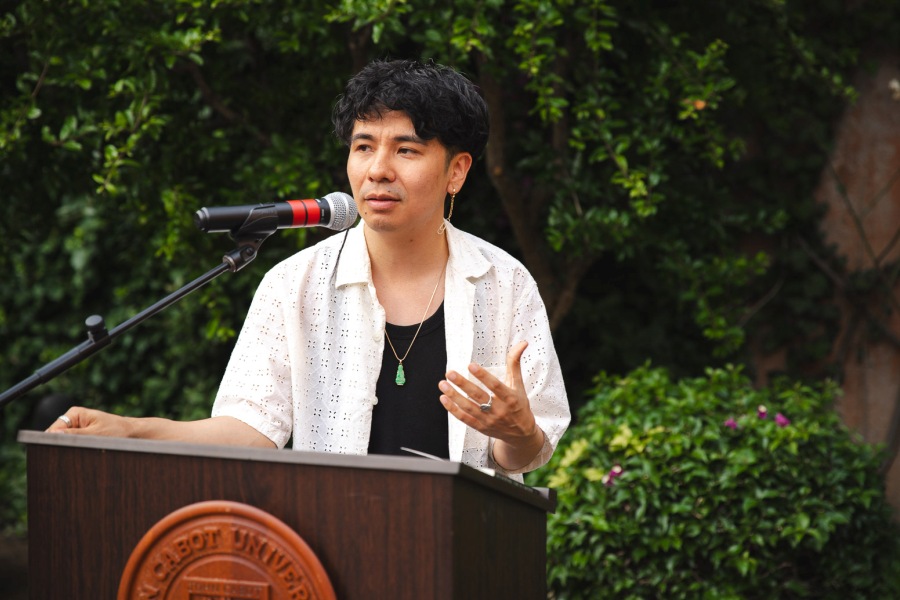Migration Flows in the Mediterranean: a Humanitarian Crisis
On Monday, April 24, Professor Antonella Salvatore welcomed Flavio Di Giacomo from the Coordination Office for the Mediterranean at the International Organization for Migration (IOM) to her class “Made in Italy: the Italian Business Environment.” The lecture was held in collaboration with the JCU Service Learning Project – Combining Fieldwork and Education. Di Giacomo gave a presentation titled “Migration Flows in the Mediterranean: a Humanitarian Crisis” along with JCU Alumna and IOM Communication Assistant Chiara Di Maio.
The first part of the lecture focused on the current migration crisis in the Mediterranean. Di Giacomo clarified the terms used to define the different statuses of migrants: economic, political, and refugees. International protection laws safeguard migrants who fall under the status of asylum seekers, when migrants come directly from a country at war. Those who cross the sea from a transit country that is not at war are not entitled to the same status. For this reason, most prefer reaching Libya and crossing the sea to enter international waters.
The key countries of origin of the migrant population are Nigeria, Eritrea, Guinea, Ivory Coast, and Gambia, mostly due to demographic and economic factors, as well as climate change. Syrians are consistently decreasing since the opening of the Balkan route. In 2016, IOM registered 363,348 arrivals (with 5079 deaths at sea,) a migration flow which benefitted the Italian black labor market and contributed to the recent controversy surrounding the NGOs operating in the areas of Lampedusa, Sicily, and Calabria.
Another serious issue in the context of migration flows in the Mediterranean is the status of women. Many arrive in Italy pregnant, as they are raped in Libya. They are between 16 and 18 years old, on average. Most women have no idea of what they will face during the journey, and are allured by the idea of getting a job as soon as they get to Europe. 80% of migrant women are psychologically manipulated and exploited through sex trafficking.
The analysis of migration flows during the lecture made it clear that the EU is not facing an emergency in terms of numbers. Rather, it can be seen as a humanitarian and operational crisis. “The most relevant issue at stake in today’s debate on migration flows is the need to close irregular entry channels and open new legal ones, in order to integrate migrants in the EU economic system and job market. As migration is one of the oldest phenomena in history, it is fundamental to establish a collaborative approach with the countries of origin, and understand that migration is here to stay,” said Di Giacomo.
The lecture ended with the presentation of one of IOM’s most successful peer-to-peer communication campaigns, Aware Migrants, a collection of fifteen video testimonials of migrants whose intent is to inform other migrants about the dangers and risks of the journey from Africa to Europe.






